Original URL: https://www.theregister.com/2009/04/16/review_graphics_sapphire_vapor_x_hd_4850/
Sapphire Vapor-X HD 4850 vapour-cooled graphics card
The cooler that turns a Vindaloo into a Korma
Posted in Personal Tech, 16th April 2009 11:02 GMT
Review The Sapphire Vapor-X HD 4850 is a reference Radeon HD 4850 with an after-market cooler. That might not sound like a big deal, but Sapphire has come up with something special.
Most graphics card manufacturers try to differentiate their products from the competition and they often use the trick of changing the reference cooler for their own design to add some visual impact. Sapphire has plenty of history in this department and seems to be constantly developing new coolers for its range of AMD ATI Radeon HD-based graphics cards.
The starting point with the HD 4850 is the reference ATI cooler:
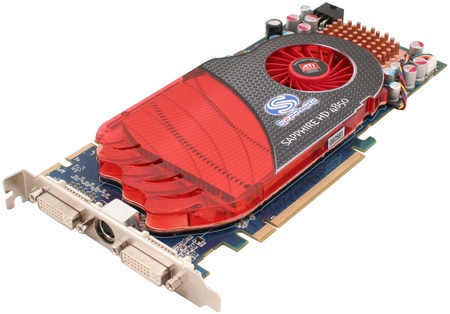
It's very compact. The GPU and memory are covered by a copper heatsink with a slim line cooling fan at the far end that draws air across the heatsink. This allows the HD 4850 to be manufactured as a single-slot design but the downside is that the cooler sheds its heat inside the casing and it runs unpleasantly hot at all times. Once the HD 4850 has warmed up, the GPU operates at a constant 80-82°C regardless of whether your PC is displaying the Windows desktop or working hard playing Crysis.
We measured the temperature of the body of the graphics card at 60°C so we’re talking about a hefty slab of metal and plastic that is working hard to heat up the guts of your PC.
Sapphire has made a number of attempts to overcome this antisocial behaviour starting with its Dual Slot cooler:
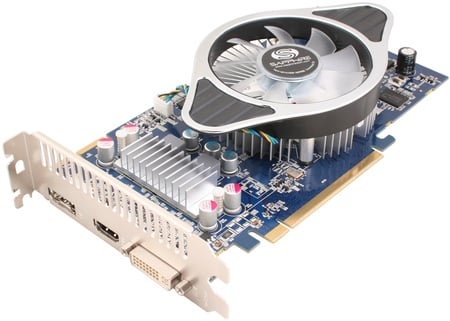
This is a conventional design that locates the heatsink and fan directly over the GPU and the relatively large fan is able to operate quietly while still keeping the HD 4850 under control. As the name suggests, the Dual Slot cooler increases the size of the graphics card but it also does away with the copper heatsink that retains so much heat in the body of the reference graphics card.
Sapphire took a second bite at this particular cherry with the HD 4850 Toxic:
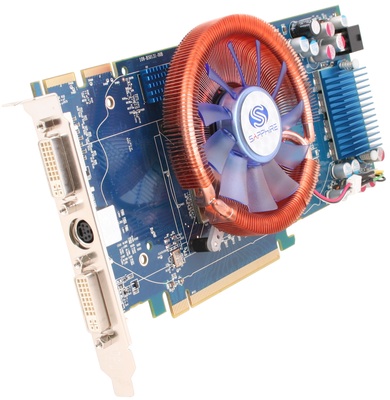
It uses a Zalman cooler that is rather more sophisticated than the double-slot cooler. Heatpipes are used to shift heat away from the GPU to the copper fins that surround the fan with the result that cooling is far more efficient.
Unfortunately we found the fan noise was rather intrusive and that made the concept too toxic for our taste.
Let’s hope it’s third time lucky for Sapphire as it unveils Vapor-X.
The layout of the Vapor-X is similar to the Dual Slot and the Toxic as the cooler sits directly over the GPU with a black plastic cover that guides waste heat towards the vented bracket. The cover forms a duct but it isn’t sealed to the bracket so you don’t get the annoying roaring noise that often occurs when air flows through a nozzle.
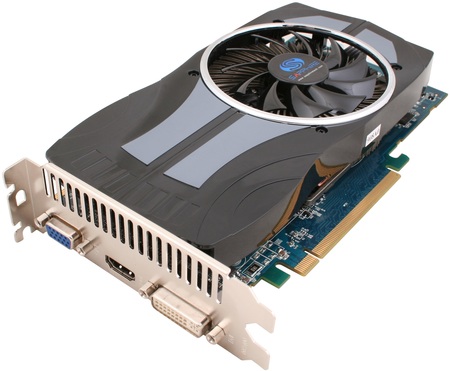
Once the cover is removed you can see the cooler more clearly and at first glance it looks rather basic:
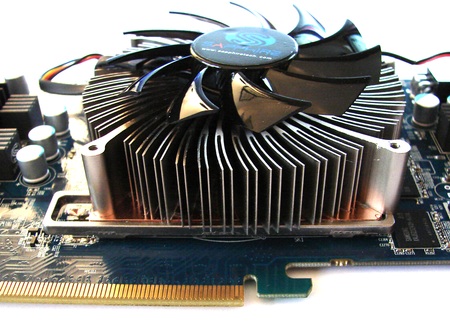
The base of the heatsink only measure 2mm in thickness and carries a copper insert. On top of that is an aluminium heatsink with radiating fins and a cooling fan that measures 72mm in diameter with 11 blades that appear to be made of cellophane or some other flimsy plastic. That is, of course, a visual impression of the Vapor-X cooler but Sapphire has chapter and verse on the technology inside the cooler here.
As they say in the shampoo adverts, here’s the science bit:
"Vapour Chamber Technology is based on the same principles as heatpipe technology. A liquid coolant is vaporised at a hot surface, the resulting vapour is condensed at a cold surface then the liquid is returned to the hot surface. The recirculation process is controlled by a patented wick system. Sapphire Vapor-X flattens the whole system into a slim chamber - which in the graphics application is mounted in contact with the surface of the graphics chip."
That ‘explanation’ didn’t make things much clearer so we buckled down to testing the Vapor-X back-to-back with a reference HD 4850 using a Gigabyte MA790FXT-UD5P motherboard with an AMD Phenom II X4 810 running at 3.25GHz and connected to 2GB of DDR 3 memory.
We started by plugging in a passively cooled HD 3450 and saw an idle power draw of 80W at the mains socket and 120W under load.
Power Draw Results
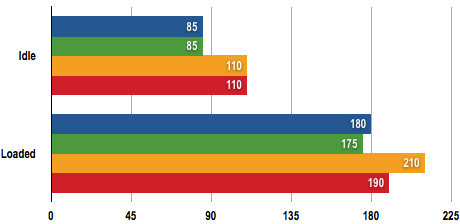
Power draw in Watts (W)
Shorter bars are better

Next we ran the reference HD 4850 at its stock speeds of 625MHz/1986MHz and, later, overclocked to 690MHz/2286MHz. The power draw at idle was 110W, an increase of 30W over the HD 3450, and climbed to 190W at standard speed and 210W overclocked. That’s a power draw of 70W and 90W, respectively, for the graphics card under load, which ran at a steady temperature of 80°C.
Switching to the Sapphire Vapor-X was a revelation as the cooler is practically silent. The graphics card runs at the same 625MHz/1986MHz clock speeds as the reference HD 4850 so the performance didn’t change but the temperature at idle plummeted to 40°C and only rose to 50°C under load. The power draw for the system dropped to 85W at idle and 175W/180W under load. This means that the Vapor-X draws a mere 5W more than an HD 3450 at idle and 25W less than the reference HD 4850.
Under load the Vapor-X draws 15W less than a regular HD 4850 at standard speeds and 30W less when the two cards were overclocked. This suggests that the standard fan has to work incredibly hard to move air through the single-slot reference cooler.
GPU Temperature Results
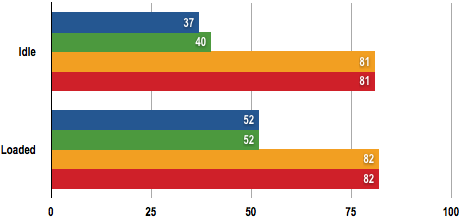
Temperature in Degrees Celcius (°C)
Shorter bars are better

The OverDrive section of the Catalyst drivers wanted to overclock the Vapor-X from 625MHz/1986MHz to 690MHz/2376MHz, which is faster than a reference HD 4850. However the system froze under load until we dropped the memory speed back to 2200MHz. This didn’t have a huge impact but it gave the reference card a slight edge in our benchmark tests. Even so, the difference in the power and temperature figures is quite remarkable.
3DMark Vantage Results
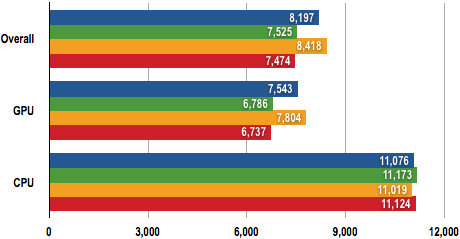
Longer bars are better

Far Cry 2 Results
1920 x 1080, no AA
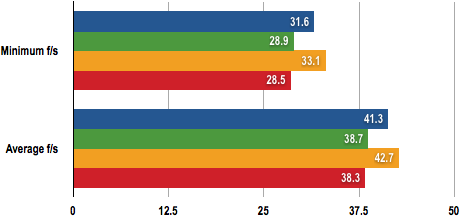
Longer bars are better
1920 x 1080, 2x AA
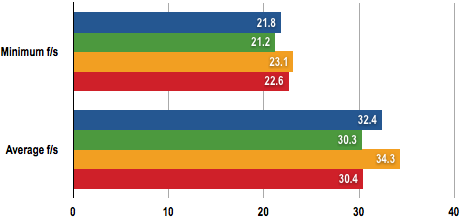
Longer bars are better

Our temperature figures relate to the GPU as reported by the Catalyst drivers but we verified them by measuring the temperature of the back of the graphics card and the cooling package with an infra-red gizmo. The reference HD 4850 operates at 60°C but the Vapor-X runs at a chilly 35°C.
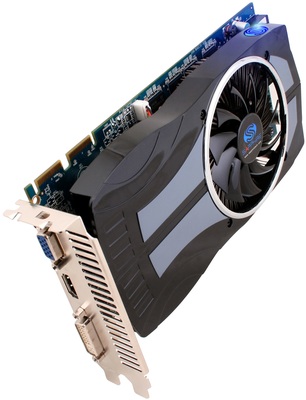
One VGA, one DVI, one HDMI, no adaptors
So how much will Sapphire rush you for Vapor-X? You can buy a reference 512MB HD 4850 for £110, the Dual Slot model costs £124 or you can have a Toxic for £143.
So we were staggered to see that the Vapor-X has gone on sale at £128 which makes it something of a bargain.
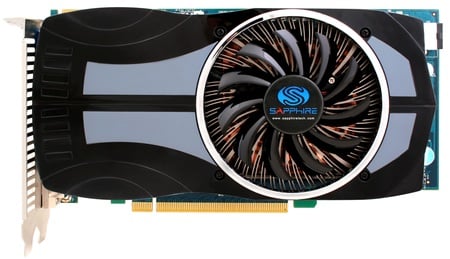
Bloody brilliant cooler
We have a single note of caution which is that the choice of ports and connectors on the Vapor-X is a little odd: one VGA, one DVI and an HDMI. There are no adaptors in the package so if you want to run a pair of TFTs we’re not quite sure what you should do. But if you want to become more environmentally responsible and still play the latest games, it's hard to see where else you can turn.
Verdict
Vapour-X is bloody brilliant and transforms your Vindaloo HD 4850 into a mild Korma. ®
More Graphics Card Reviews...

AMD ATI Radeon HD 4890 |

HIS HD 4870 IceQ 4+ Turbo |

Gigabyte passively cooled Radeon 4850 |

Asus ENGTX285 TOP |